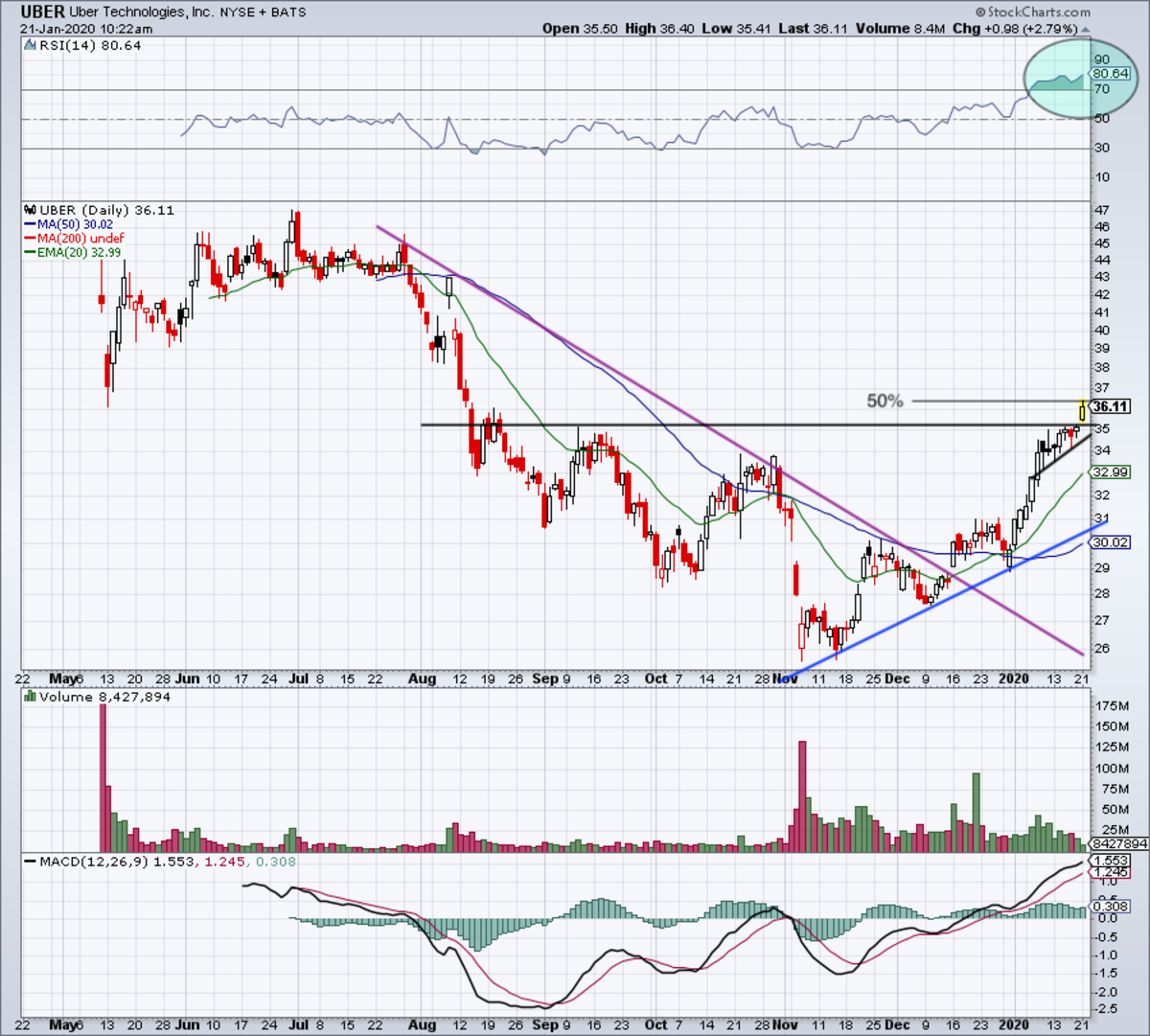Investing In Uber: Risks And Rewards Of UBER Stock

Table of Contents
The Allure of Investing in Uber: Potential Rewards
Uber's appeal as an investment hinges on several key factors: its market dominance, technological innovation, and potential future growth.
Market Dominance and Growth Potential
Uber's global presence is undeniable. It boasts a significant market share in the ride-hailing sector and is a major player in the rapidly growing food delivery market via Uber Eats. This established presence provides a strong foundation for future expansion.
- Global Reach: Uber operates in numerous countries worldwide, providing a diversified revenue stream and minimizing reliance on any single market.
- Market Leadership: Uber holds a substantial market share in many regions, giving it a competitive advantage.
- Diversification: Uber's expansion into new areas, such as Uber Freight (for logistics) and its ongoing investments in autonomous vehicles, presents significant long-term growth opportunities. The potential for autonomous driving to significantly reduce operational costs is a key driver of future profitability.
- Projected Growth: Analysts predict continued growth in the ride-sharing and food delivery markets, offering the potential for substantial returns on Uber stock. However, it is crucial to consult multiple sources and consider diverse opinions before acting on these projections.
Technological Innovation and Future Technologies
Uber's commitment to technological advancement is a significant factor driving its potential for future success.
- Self-Driving Cars: Uber's investment in autonomous vehicle technology could revolutionize its operations, potentially reducing costs and increasing efficiency. The successful implementation of this technology would be a major game-changer.
- AI and Machine Learning: Uber leverages artificial intelligence and machine learning for optimized route planning, dynamic pricing, and fraud detection, enhancing operational efficiency and profitability.
- Advanced Mapping and Logistics: Uber's sophisticated mapping and logistics technologies are crucial for efficient operations and provide a competitive edge. Improvements in these areas could lead to cost savings and increased customer satisfaction.
Dividend Potential (or lack thereof)
Currently, Uber does not pay dividends, prioritizing reinvestment in growth and expansion. This is a common strategy for rapidly growing companies.
- Growth over Dividends: Uber's focus is on capital appreciation rather than dividend payouts. This approach may be attractive to investors who prioritize long-term growth over immediate income.
- Future Dividend Potential: As Uber matures and achieves sustained profitability, a dividend policy could be implemented. However, this remains uncertain and depends on various factors, including market conditions and company performance.
- Capital Appreciation: Investors in UBER primarily seek capital appreciation through stock price increases, rather than dividend income. This requires a long-term investment horizon and an understanding of the inherent risks.
Navigating the Risks of Investing in Uber Stock
While the potential rewards are significant, investing in Uber stock involves substantial risks.
Intense Competition and Market Saturation
The ride-sharing and food delivery markets are highly competitive. Uber faces strong competition from established players and new entrants.
- Lyft and Other Ride-Sharing Services: Lyft is a direct competitor, and other ride-sharing services pose a significant threat, especially in specific regions.
- DoorDash and Other Food Delivery Services: Uber Eats competes with DoorDash, Grubhub, and other food delivery platforms in a fiercely contested market.
- Market Saturation: In some mature markets, market saturation could limit future growth opportunities, potentially impacting Uber's revenue and profitability.
Regulatory Hurdles and Legal Challenges
Uber operates in a heavily regulated environment and faces ongoing legal and regulatory challenges worldwide.
- Driver Classification: The classification of Uber drivers as independent contractors versus employees is a significant legal and regulatory issue in many jurisdictions.
- Labor Laws: Uber faces ongoing legal battles related to worker rights and labor laws, which could impact its operating costs and profitability.
- Data Privacy: Data privacy regulations pose significant challenges and could lead to fines or other penalties if Uber fails to comply with evolving regulations.
Profitability and Financial Performance
Uber's path to sustained profitability remains a key concern for investors.
- Revenue Growth: While Uber demonstrates strong revenue growth, achieving consistent profitability remains a challenge.
- Net Income: Uber has experienced periods of net losses, highlighting the ongoing need to improve operational efficiency and control costs.
- Debt Levels: Analyzing Uber's debt levels and financial leverage is crucial to assessing its overall financial health and risk profile.
- Earnings Per Share (EPS): Monitoring EPS is essential for understanding the company's profitability on a per-share basis.
Conclusion
Investing in Uber stock (UBER) presents a compelling opportunity for growth but carries considerable risks. The company's market dominance, technological innovation, and global reach offer significant potential rewards. However, intense competition, regulatory hurdles, and the ongoing quest for profitability demand careful consideration. Before investing in Uber stock (UBER), carefully weigh the risks and rewards. Conduct thorough due diligence, analyze financial statements, and consider consulting with a financial advisor to make an informed investment decision. Remember, while Uber's potential is undeniable, responsible investing requires a comprehensive understanding of both the upside and downside.

Featured Posts
-
 Final Destination Bloodline Cinema Con Footage Hints At A Franchise Best
May 19, 2025
Final Destination Bloodline Cinema Con Footage Hints At A Franchise Best
May 19, 2025 -
 2025 Significante Daling Passagiersaantallen Maastricht Airport
May 19, 2025
2025 Significante Daling Passagiersaantallen Maastricht Airport
May 19, 2025 -
 Todays Nyt Connections Answers April 17th Puzzle 676
May 19, 2025
Todays Nyt Connections Answers April 17th Puzzle 676
May 19, 2025 -
 After Years Of Highs Celebrity Tequila Brands Face A Market Shift
May 19, 2025
After Years Of Highs Celebrity Tequila Brands Face A Market Shift
May 19, 2025 -
 Apple Crop Forecast 10 30 Reduction Due To Rosy Apple Aphid Infestation
May 19, 2025
Apple Crop Forecast 10 30 Reduction Due To Rosy Apple Aphid Infestation
May 19, 2025
